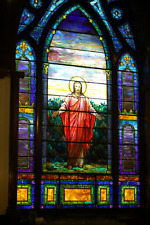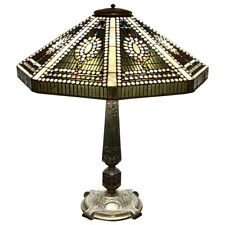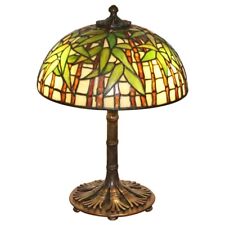Tiffany & Co 1910 Edwardian Essex Glass Scent Bottle 18Kt Gold And Rock Quartz

When you click on links to various merchants on this site and make a purchase, this can result in this site earning a commission. Affiliate programs and affiliations include, but are not limited to, the eBay Partner Network.
Tiffany & Co 1910 Edwardian Essex Glass Scent Bottle 18Kt Gold And Rock Quartz:
$19950.00
Fox Essex glass scent bottle designed byTiffany & Co.
An exceptional very rare piece, created during the Edwardian period at theTiffany Studios, back in he 1905. This fabulous scent bottle has been carved from translucent rock quartz and mount with an oversizedEssex glassreverse carved piece depicting the enameled three dimensional head of a fox. Both parts are mounted with hinged round frames crafted in solid yellow gold of 18 karats with high polished finish. Fitted with a push opening button, an invisible hinges and an interior gold screw lid. The head of the foxis magnificent, very well carved with realistic details and exceptionally painted.
Weight: 137.50 Grams, (88.14 Dwt).
Measurements: 34 mm by 40 mm by 80 mm (1.34 x 1.57 x 3.15 Inches).
Hallmarks: Stamped with the maker's mark, the mark for the assay of the gold and signed, "TIFFANY & CO.".The gold partshas been independently tested using state of the art technology (Niton XL2 Analyzer) and verified as over 18k gold .770/.999 assay.
Essex Glass
Essex crystal pieces are formed from a rock crystal cabochon (polished domes of rock crystal with a flat base), an image or motif is then reverse carved into the flat base, and then painted, to give them impression of a three dimensional object or image encapsulated in the cabochon when viewed from above.Production of a reverse crystal intaglio begins with the mining and cutting of fine rock crystal from Brazil or Madagascar. A well-formed cabochon is the key to a beautifully made reverse intaglio and the tedious process of hand polishing it to perfection had to be completed before the design work could begin. A watercolor rendering of the image was painted on the underside of the cabochon and an oil and diamond dust mixture was used along with up to 250 scribing tools to carve the design into the interior of the crystal “…the deeper the carving the more pronouncedtrompe l’oeileffect.”Once the carving was established the painting process began with extremely fine brushes and paint working in reverse to create incredibly detailed images.This process of carving into the back of the cabochon is sometimes referred to as reverse intaglio, not be to mistaken with intaglio, which is designed to be viewed from the same side on which it is carved, unlike Essex crystal. Particularly when the image is of something which is itself small in reality, such as an insect, they can be very convincing when created by skilled craftsman. Thomas Cook was believed to be responsible for introducing them to Britain from the continent in the 1860s, and there were initially sold by Hancock’s in London. During the same period the artist William Essex, was a great favourite of Queen Victoria, and known for his enamel painting and miniatures. It would seem that the public put two and two together and came up with five, in that they believed these exquisite miniature painted jewels could only have been created by such a celebrated talent as Essex, and the name stuck despite him having nothing to do with their creation.
Interestingly, William Bishop Ford, a student of Essex’s created well known enamelled miniatures set in jewellery such as stick pins during the late 1800s; particularly an image of a fox head, which was also a popular motif in Essex crystal pieces; possibly helping to perpetuate the myth surrounding his masters involvement with the craft.Unfortunately, very few of these mini-masterpieces can be attributed to specific craftsmen, the only artist to sign his pieces was Emile Marius Pradier of Belgium, who was believed to have developed the technique. Thomas Cook made crystals himself for Lambeth & Co, and trained an apprentice Thomas Bean, who then went on to train his son and grandson. After the cabochon has been created, a mixture of oil and diamond dust is used alongside anywhere up to 250 different tools to carve the design. It is a complicated skill, the secrets of which were often kept within a particular family of craftsmen.
Edwardian Period
This era,like the Georgian and Victorian eras before it, derives its name from the reign of the English King, Edward VII (1901-1910). Edwardian jewelry is known for representing femininity while incorporating a lot of the color white. Think diamonds, pearls and white metals like platinum and white gold. Diamonds often had an Old Mine or European cut and sapphires were a popular choice for a pop of color. They tended to be made from platinum and diamonds – the more, the merrier – and used fashionable, intricate techniques such as filigree and millegrain. Edwardian rings are works of art and best worn alone or alongside a simple wedding band. Millegraining, a new decorative technique made possible by the use of platinum, is featured often on Edwardian jewelry. Its border of delicate balls and ridges surrounding a gemstone or on the knife sharp edges of a design served to give jewelry a softer, lighter look.
Literature:Miller, Anna M.Illustrated Guide to Jewelry Appraising. New York: Von Nostrand Reinhold, 1990. Widener, Roger & Walter, Thomas. “Little Beauties”The Story of Reverse Intaglio Crystals© Roger Thomas ltd. For similar examples of this rare and difficult technique.
Note: This piece is extremely rare and we has been not able to see any other.We only locate few pieces of minor jewelry made by Tiffany in the same technique from the same period. This is one of the best essex reverse carving we have ever seen.
Collateral: It is accompanied by a presentation jewelry box.
Condition:The overall condition of this bottleis excellent. Beside the little normal wear, there is no damage to the gold, have a small rim nick in the bottom. This piece has been carefully inspected to guarantee the condition and authenticity.
INVENTORY REF:D040323ERNM/3.305
Tiffany & Co 1910 Edwardian Essex Glass Scent Bottle 18Kt Gold And Rock Quartz:
$19950.00

Related Items:
Genuine Tiffany Studios Church Stained Glass Window, Signed and Documented
$248000.00
Tiffany Studios Rare Empire Jewel Table Lamp
$114000.00
Tiffany Studios Bamboo Table Lamp
$87000.00







